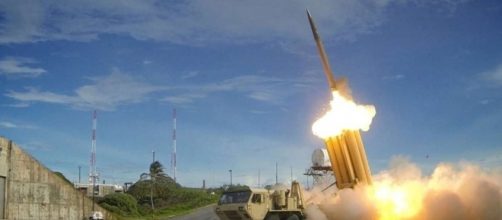The intention of the United States was to arm South Korea against missile attacks by North Korea. With that in mind, it had provided Seoul with a missile defense system called Thaad. Two of these have already been positioned in the country and a few more are in the pipeline but, the new government in Seoul has put on hold their deployment.
It has taken this decision because it feels THAAD has not only resulted in strained relations with China but has also angered North Korea and Seoul wants to maintain good relations with its neighbors.
How the situation stands
CNN reports that Seoul will not withdraw the THAADs that are already with it. However, the deployment will have to wait for clearance from the environment group for which a full-blown assessment is to be done. This will take time and the final decision will be taken after the assessment is completed.
It may be recalled that, in the course of his election campaign, Moon Jae-in had said that the roll out of the system must be halted and the matter must be referred to the parliament of South Korea who will have to take the final decision. Obviously, he wants it to ratify the decision. In his opinion, the deployment of THAAD had been agreed to by his predecessor Park Geun-hye with the United States and was implemented in haste without going into all the aspects.
Hesitation of Seoul
THAAD was given to South Korea during the reign of the previous president and was seen as an attempt to compel the new incumbent to accept the system. This is not acceptable to the new president Moon Jae-in. Moreover, China has also opposed the move because it felt that its own security related to its own deterrent systems would be compromised.
Consequently, a rift has appeared between the two countries which has affected businesses.
The system was expected to become fully operational by the year end but, due to the need for an environmental assessment, the deployment could probably shift to 2018 provided it is agreed to by the parliament.
What is THAAD all about?
THAAD is the acronym for Terminal High Altitude Area Defense.
It has been developed by the United States and supplied to South Korea to protect it from missile attacks from North Korea. The system can shoot down different types of missiles as they zero-in on the targets. The system is also equipped with a radar that can operate in conjunction with US missile defense systems installed on US warships which are patrolling in nearby regions.
It stands to reason that the United States had positioned a sophisticated equipment of this nature in South Korea to help it in its mission of maintaining a close watch in the Korean peninsula. The defense system was also perceived as an assurance to its allies. This was necessary because North Korea was threatening to launch missiles targeting the US and its allies. Therefore the decision of Seoul to delay the deployment would come as a big blow to the plans of the United States and it would have to revise its strategies.


